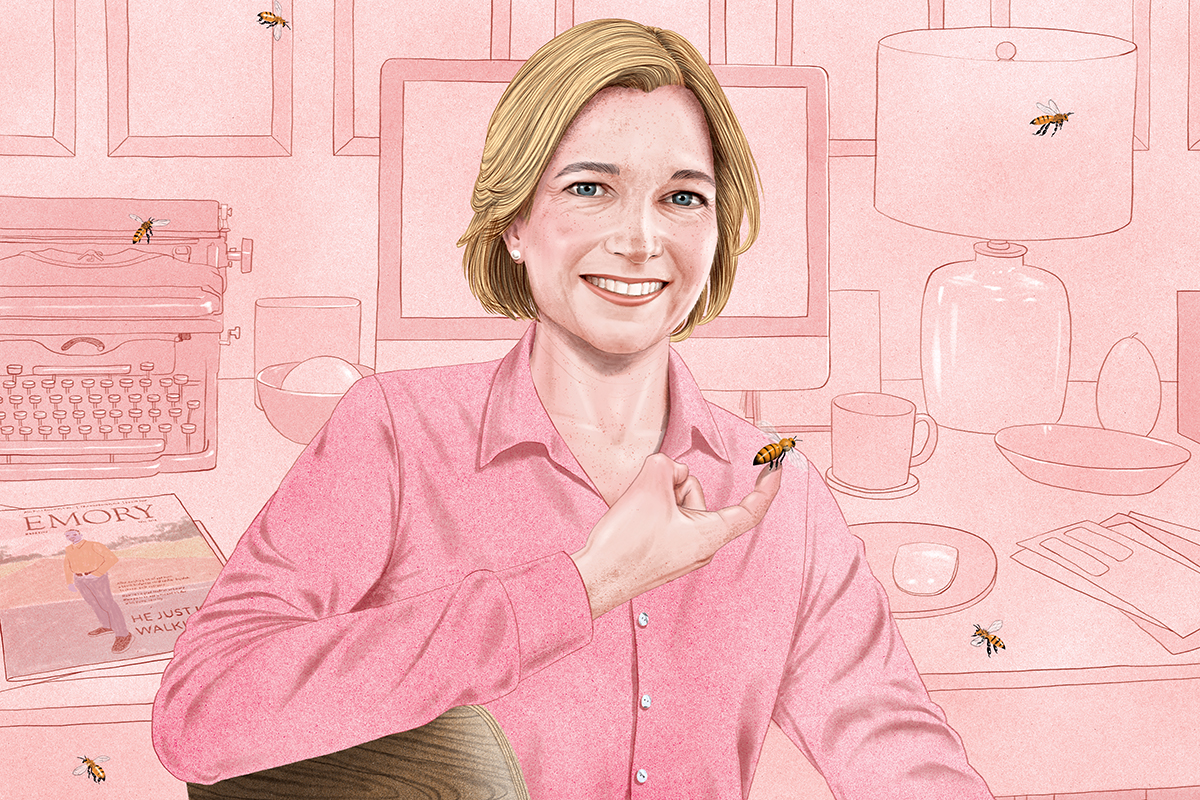Flight of Stories

Ever since I met Garang Buk Buk Piol, I have thought about him every day.
When Garang was a boy in South Sudan, he watched armed militants come to his village and set it on fire, killing many of the men who lived there. To escape, he had to walk to Ethiopia, for miles and days and weeks, across punishing terrain, with no expectation of food or water, while others died around him. Then he had to join an army and learn to use a gun. He served as a child soldier for five years. And now he’s here, at Emory, as a graduate student pursuing two master’s degrees. I find that extraordinary, every day.
I have been fortunate to meet a lot of extraordinary people while working on Emory Magazine. His Holiness the XIV Dalai Llama, President Jimmy Carter, Paul Simon, and Salman Rushdie spring to mind, as well as personal literary heroes Margaret Atwood, Alice Walker, and Barbara Kingsolver. But most of our community members—alumni, faculty, students, and others—are not household names.
There was the grad school alumna who led a momentous effort to map American regional English in a multivolume dictionary. And these two dudes who made oil out of algae—algae!—in a garage.
There was the attorney who helped bring National Geographic into the digital age, and the immigrant who became a doctor to the poor and disadvantaged. And the preacher who boldly took the pulpit of one of New York City’s most revered and influential churches.
I interviewed a law student who unearthed DNA evidence to free a wrongly incarcerated man, and a guy who was living by himself in rural Ghana, pulling worms out of people and counting them. I spoke with the CEO of the New York Stock Exchange and a professor of Jewish studies who confronted a Holocaust denier—and won—on the world’s big screen. I am inspired by these examples, and so many others, every day.
What’s the common denominator? Emory.
This place is a magnet for sheer brilliance and drive and altruism. And everyone who sets foot on this campus has a story—the story of what brought them here, what they accomplish while they live and work among us, and what direction they will take when they move on. They’re all stories worthy of telling. Whatever impact they may create will always be, in some small way, part of Emory’s story, too.
Speaking of making an impact, have you been hearing about the bees?
Bees are, apparently, nearly magical creatures, upon which the future of our planet largely depends. According to the Emory science blog eScienceCommons and biology professor Berry Brosi, who researches both managed and wild bees, honeybee pollination alone is worth more than $15 billion to US agriculture, and “Pollinators, most often honeybees, are responsible for one in every three bites of food we take.”
You know, one could imagine Emory Magazine, and the many other excellent sources of the university’s stories across various media channels, as bees . . . thousands of bees, just buzzing along matter-of-factly like they’re supposed to, flying surprising distances on their too-small wings to help disseminate something vital that will help a whole beautiful system continue to grow and blossom and thrive.
In case you haven’t figured it out by now, this is my last issue as editor of Emory Magazine. It seemed fitting for this column to appear on the Coda page.
It has been a rare privilege and a pure delight to help tell Emory’s stories for almost nineteen years, over more than seventy issues; to see my son graduate this past May; and to play a small part in the vast, ongoing narrative of this magnificent place.
I hope you enjoyed this issue. As a proud Emory graduate, I can’t wait to see what the next one holds. Meanwhile, let’s all try and look out for the bees.






